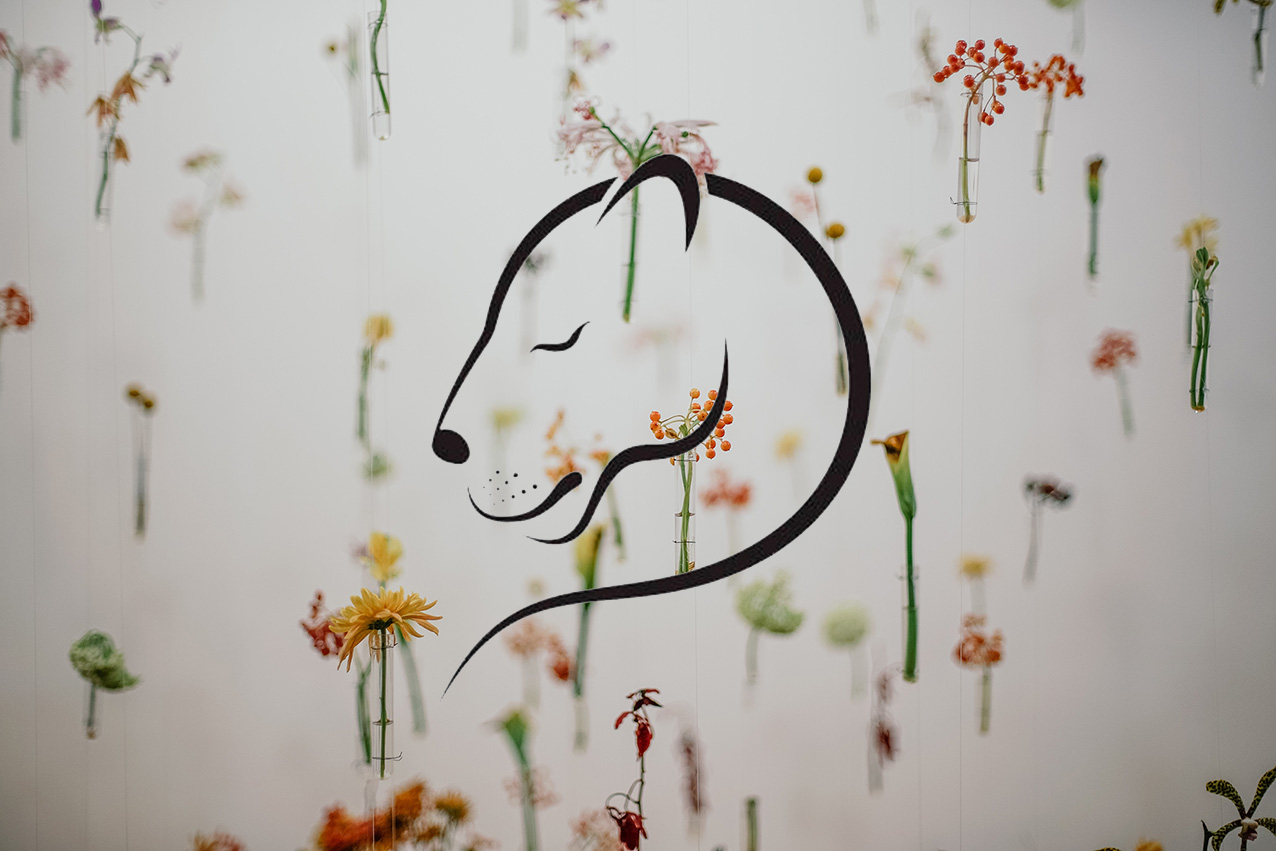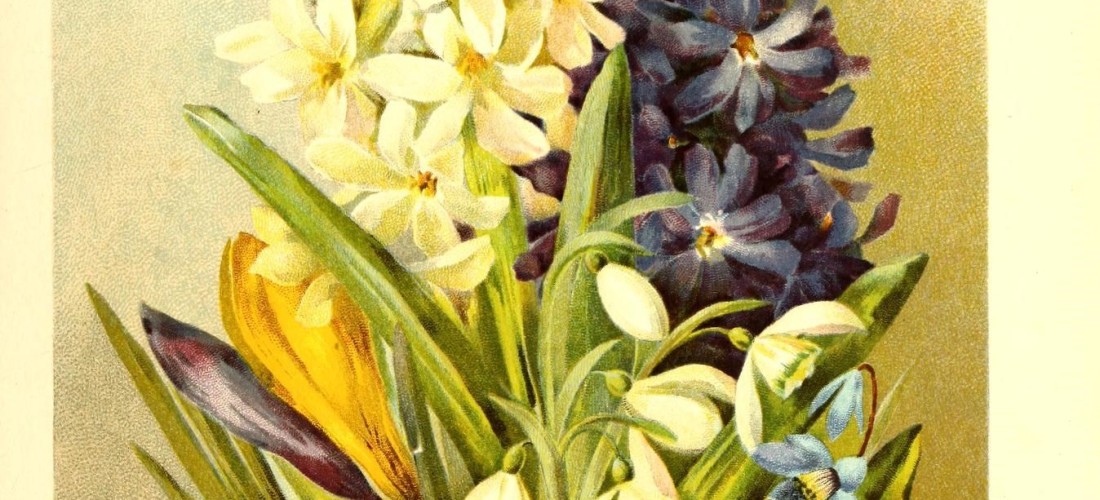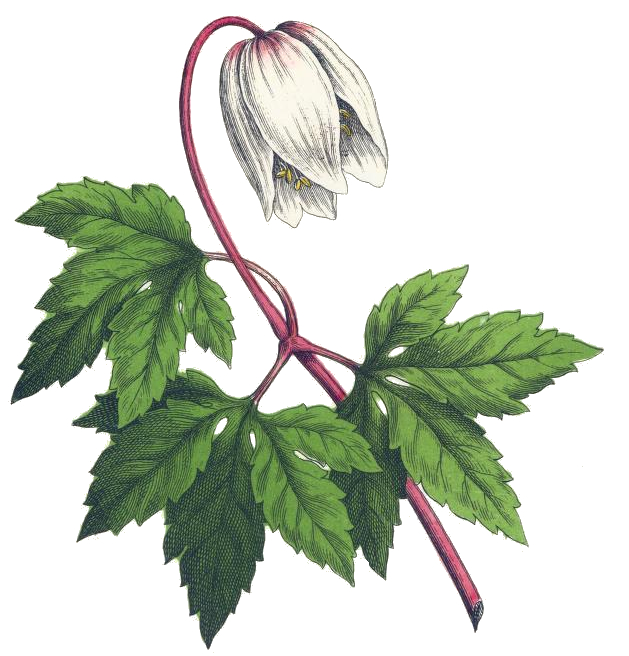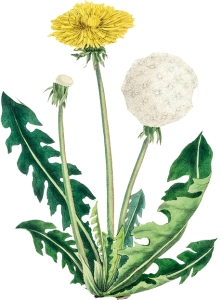Niamh Boyce is an award winning writer and poet from Ireland who is based in the Irish Midlands. Using the novel and poem to unearth the witches, ghosts and other buried voices of marginalised Irish women, her writing frequently explores womanhood and the oppressive influence of the Catholic religion and patriarchy on women’s lives. In 2012, she was awarded the Hennessy XO New Irish Writer of the Year for her poem “Kitty” and later went on to publish her first poetry collection, Inside the Wolf (2018), in which she dissects traditional fairy tales to explore art, motherhood and her Irish ancestry. Boyce’s debut novel, The Herbalist was published in 2013, gaining her Newcomer of the Year at the Irish Book Awards the same year. Set in 1930 rural Ireland, it tells the story of how the arrival of a mysterious medicine man to a small Irish village impacts the lives of four women within the community and exposes the culture of shame and silence which oppresses them. In 2019, Her Kind was published and shortlisted for the EU Prize for Literature. Taking the title from the Anne Sexton poem, the novel provides a speculative account of the Kilkenny Witch Trial which saw a group of Irish women condemned for witchcraft in 1324. In this interview, Lyonesse Editor Sam Young and Niamh discuss some of her feminist literary influences, the enduring allure of myths folklore and fairy tales, and giving voice to the historically silenced women of Ireland’s turbulent past.

In our Literary Lyonesses section, we give thanks to the women writers of the past and acknowledge how their writing helped to shape the future of women’s literature. If we were to take a rummage through your bookshelves, which books by literary lyonesses would we find?
Adrienne Rich’s Of Woman Born is one. My copy is twenty-eight years old, and I love reading what younger-me underlined, and scribbled in the margins. I don’t write on novels, but treat non-fiction books like a conversation and I highlight, underline, and sometimes argue back in the margins. Of Woman Born blew my mind, it was the first feminist work I read – there weren’t many in my local bookshop, and those were pre-internet days. I was pregnant and in my first year of college, and went into labour during my English exam writing an essay on Rich’s poetry… so all those things combined made for a potent relationship with the book! There was a definite feeling of awakening. Many of the books still on my shelves are by writers I first came across at that time. They’ve become talismanic over the years. These include Beloved by Toni Morrison, The Golden Notebook by Doris Lessing, In Search of Our Mother’s Gardens by Alice Walker, The Madwoman in the Attic by Gilbert and Gubar, The Second Sex by Beauvoir. There was also The Passion of New Eve by Angela Carter, a mad, brilliant and imaginative book that I’ve re-read many times. There’s no one quite like Carter!
At Lyonesse we are also committed to championing the work of contemporary women writers. Which of your contemporaries do you particularly admire and enjoy reading?
Pond by Marie Claire Bennet is amazing, one of those ‘nothing happens but everything happens’ books. It’s told from the point of view of a woman living in isolation in rural Ireland. It’s an intense enlivening read that has been marketed as a short story collection in some countries and as a novel in others, but it’s just itself, just Pond. Doireann Ni Ghriofa’s A Ghost in the Throat is a treasure, a pleasure, a joy – a hybrid work that weaves autofiction, essay, history, poetry, mystery. Its narrator is obsessed with the poet Eibhlín Dubh Ní Chonail. I love the author’s descriptions of breast feeding, of housework, the rhythm of her honest poetic style – ‘This is a female text’ the author tells us, and it certainly is, and one that nourishes and inspires.
Ireland has an extremely rich heritage of myth, folklore and fairy tale which is rooted in the oral tradition of storytelling. How do you think this heritage and tradition has informed your own writing?
The Irish myths I learned at school were the tales of the warrior class, heroes like Setanta, and Fionn Mac Cumhail. In these retellings, which came with vivid illustrations, women were depicted as pawns, if depicted at all – with the exception of Niamh from “Tir Na N’Og” (“The Land of the Young”). Of course, there are many vital strong women in Irish myth – Aine, Macha, Morrigan, Queen Maeve for a start, but I have no memory of them featuring in the stories we were told. I visited Queen Maeve’s Cairn in Sligo a few years after leaving school, and got some inkling of how much more there was to the Irish mythology. Legend has it that Maeve was buried standing up, spear in hand, facing Ulster. Built 5,000 years ago, her cairn can be seen for miles. Reading the land can be more enlightening than any book! I love lore relating to land and liminality – caves, forests, hawthorns, witching hour. Setting is really important in my fiction. I spent a lot of time in Kilkenny, walking the routes my characters walked, while writing about the medieval witchcraft trial of Alice Kyteler. Many of the scenes were written on the site where they played out. I love to tap into the atmosphere of a place, touch the old stones, walk the ancient steps… The same went for The Herbalist, I took notes by the river, down the alley where the herbalist lived, and in the square where he sold his potions to the women of the town. There was a lot of folklore around that trial, and I grew up hearing snippets. I love kitchen sink folklore – those half-heard stories, advice and warnings. I find folklore endlessly fascinating, more so than mythology. Give me talk of charms, superstitions and taboos over a grand battle any day! Sean O Sullivan’s A Handbook of Irish Folklore reveals reams of traditions and charms around birth and death – from superstitions about the caul to the omen of a bird entering your house. Duchas.ie is another amazing resource. There’s such poetry in the rituals recounted in the Irish Folklore Collection – the cross in the soda bread, the warning whispered before a basin of water is emptied out the window, a dream coming ‘out’, the red ribbon around a baby’s wrist. I think my preference definitely relates to class and gender. The oral tale, with its unpinned and changeable nature also reveals more about the ordinary people, than the recorded, sanctioned story. When I want to find out about a place or people, I turn to folklore, the songs, the lore, the rhymes, the crimes – there’s where I feel the root is, the testimony I’m interested in. I go on to read the bigger picture, the ‘official’ history too of course, but feel that folklore is the level closest to that lie that holds the truth.
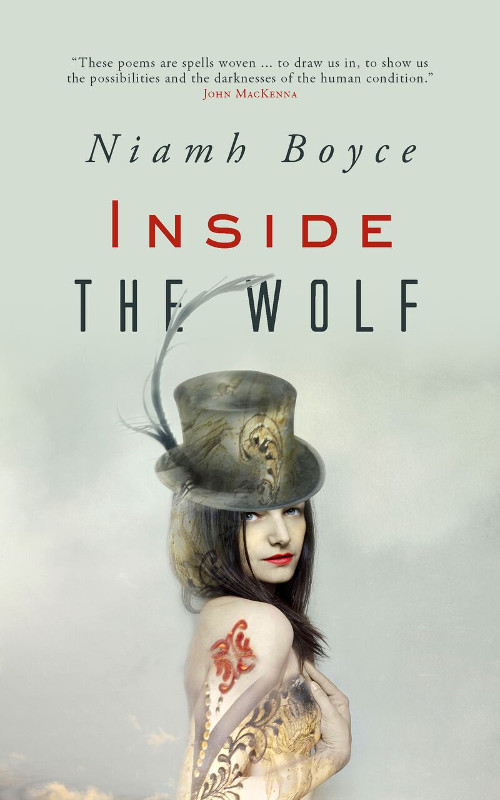
In your poetry collection, Inside the Wolf you take traditional fairy tales and breathe new life into them. What attracted you to the process of rewriting fairy tales? And why do you think fairy tales continue to be so powerfully alluring?
Allure is the perfect word. Their lure is very strong for me, there is so much to love, the transformations, the strange creatures, the dark forests, the drops of blood on snow, the wolf waiting behind the tree… but I think the lasting nature of the allure might be due to the circumstances around their retelling. I heard these stories over and over as a very young child, lying in bed, just before going to sleep. Most likely, they seeped into my dreams and played out there too. There’s something magical about being read to, about closing your eyes and hearing the words, and seeing the tale unravel, your version of the wolf, the forest, the grandmother, the girl. It’s possible that the fairy tale characters and their stories became interwoven with my own concerns and battles in my dream world as a child and became ‘charged’ for me at that early stage. Another source of their power lies in their oral origins, they were crafted to be remembered and recited. They rhyme in so many ways – the repetition of phrases, of plot elements, colour, symbols, the use of three – they are simple stories, easily held in the mind, and full of refrains we love to repeat – What big eyes you have grandmother? And he huffed and he puffed and he blew the house down. Run, run, as fast as you can, you can’t catch me I am the ginger bread man. I don’t think I’ve encountered stories in such a potent way since. My writing is a way of re-entering these tales and working out traumas or questions of identity, or subverting expectations within a pre-made, familiar story-scape. The characters and stories are already highly charged, as I mentioned earlier, which makes them very potent.
There are various references to mythical and folkloric women, such as witches, mermaids in your poems. Who is your favourite mythical woman and why is she appealing?
I went mad for mermaids a few years ago. In fact, when I was pregnant, I even went through a phase of painting heavily pregnant merwomen that I sold in the Galway Market. They were lusty, roundy creatures rather than delicate Pre-Raphaelite sirens. I craved fish and wrote poems and stories about underwater women. I might have gone a little mad, but it was a very creative time! Writing poems on scraps of paper, painting on everything that didn’t move. I spent a lot of time at the sea shore. I began writing from the point of view of a selkie and it grew into one of my first short stories. Around that time, I got a letter in the post. One of my paintings had ended up in the possession of a man who lived on an island not too far away. It was a very, very long letter – maybe fifteen pages, and he said he loved the painting, and that he was in fact a descendent of a Melusine mermaid himself. It was very surreal. The figure of the mermaid felt so powerful in those days. It might have been the notion of a tribe of women who lived beneath the sea, an underwater sisterhood… but there was more, I associated them with preverbal knowledge. I don’t have the words to explain it, just to say that mermaids gave me a certain feeling, an irresistible urge to create. The way the tide is tugged by the moon.
Is there a specific myth, folk or fairy tale which you are repeatedly drawn back to or constantly creeps its way into your work?
Little Red and the Wolf. I love the various motifs and elements of that tale, the red hood (added by Perrault, so not in the original tale), the fact that the main character is a girl, moving between her mother’s house and her grandmother’s house, and of course the figure of the wolf. Its creeps into my poetry on a regular basis – it’s so ripe for subversion. Catherine Orenstein’s powerful study Little Red Riding Hood Uncloaked is an inspiring read on many aspects of the tale.
The wolf and the threat of being attacked by wolves is a motif which reoccurs in your writing. What does the wolf represent? And how does it relate to the women characters within your poems and novels?
What the wolf represents changes from one piece of work to the other, from one phase of my life to another. In my poetry, it represents instinct, sex, transformation, rebirth. I love Kiki Smiths work ‘Lying with the Wolf,’ a sculpture in which a clean sleek fully formed woman steps from the belly of the wolf. The wolf is a matrix. In poems relating to the story of Red Riding Hood it represents the place where you are told not to go to but must enter anyway. The tale has that dream quality in which all the characters are aspects of yourself. It might sound strange, but in my poetry the wolf represents almost everything primal, except death. In the world of my second novel Her Kind, the wolves were a fact of life – Ireland was known as Wolf Land at one stage, and are a threat to the women in the novel. There’s a pivotal scene where mother and daughter are circled by a starving wolf, and the mother is about to cut her daughter’s throat rather than have her eaten alive by a wolf. This act drives a wedge between them.
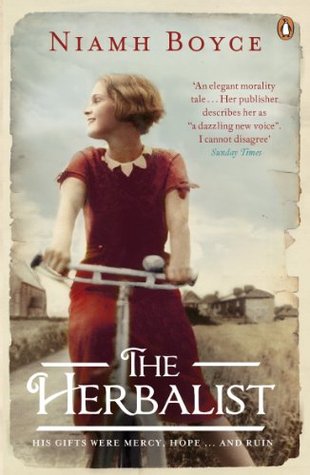
Ireland has a dark and turbulent history which has been oppressive for all marginalised groups but particularly women, whose right to their own bodies have been repeatedly denied and controlled by the Church and the State. Set against the backdrop of 1930s rural Ireland your novel The Herbalist (2013) highlights some of these issues, exploring rape, victim shaming, the Magdalene Laundries. As an Irish woman and writer how have these issues shaped your writing? And, do you think things have changed sufficiently in Ireland or is still more work to be done?
This is difficult – I had to wrestle with this question – to ask it of myself and think awhile. To be honest, those issues come out in my writing despite my intentions, rather than because of them. I have made peace with that now, but when I began writing, I actually felt hijacked by my subject matter. What I mean by that, is that I never intended to write the books I did – when I began to write fiction, I was surprized to find that the world of my stories was in the past – where was that sexy edgy contemporary novel I sat down to write? When I first began to write I used the free writing method, just letting the words flow, seeing what came. Natalie Goldberg’s book, Writing the Bones was an influence. The voices that came were from women living in 1930’s Athy, and their stories circled around the arrival an Indian Herbalist. It was a real-life case; a trial I’d come across while archiving old newspapers years before, and forgotten about. The voices were stronger and more alive than anything else in my notebook. So, I gave in, ditched my attempts at an edgy contemporary thriller, and wrote The Herbalist. Looking back, it was a gift – a book that gave itself to me in the way some poems do. And once I accepted that I was writing it – it was a joy to write. Each woman in the book is pushing back against the rigid society of the time. My drive, I discovered – was working with voices that have been supressed or silenced, and mixing fact and fiction. I’m drawn to sex, power and justice. Part of writing is discovering what kind of writer you are, I guess.
My concerns are connected with the stranglehold the church/state in Ireland had on women and men in the country I grew up in, to the vividness of the misogyny, the sanctioned hatred and media witch trials of women like Joanne Hayes and Annie Murphy. I still remember sitting in my school uniform beside the radio and hearing that Anne Lovett, a fifteen year old girl, had died giving birth beside a grotto to the ‘Virgin’ Mary – the shock of that moment has never left me. The horror that I lived in a country where such a thing was possible, where such a thing was the tip of the iceberg. Paula Meehan wrote a very powerful poem about Anne Lovett’s death called “The Statue of the Virgin at Granard Speaks.” Almost thirty years later, in 2012 Savita Halappanavar died after being denied health care in a Galway hospital. Suffering from septicaemia and needing a termination, she was denied the procedure, the midwife saying, ‘this is a catholic country’. Savita died as a result. There were candlelit vigils, signs that said ‘Never Again.’ Change in the law eventually did happen, but only because of the huge work women put into campaigning. As Anne Enright said sat the launch of The Long Gaze Back (Sinead Gleeson’s anthology of stories by Irish women writers) – ‘it’s a double burden for women, not only do you have to suffer the discrimination, you have to put in all the fucking work to fix it.’
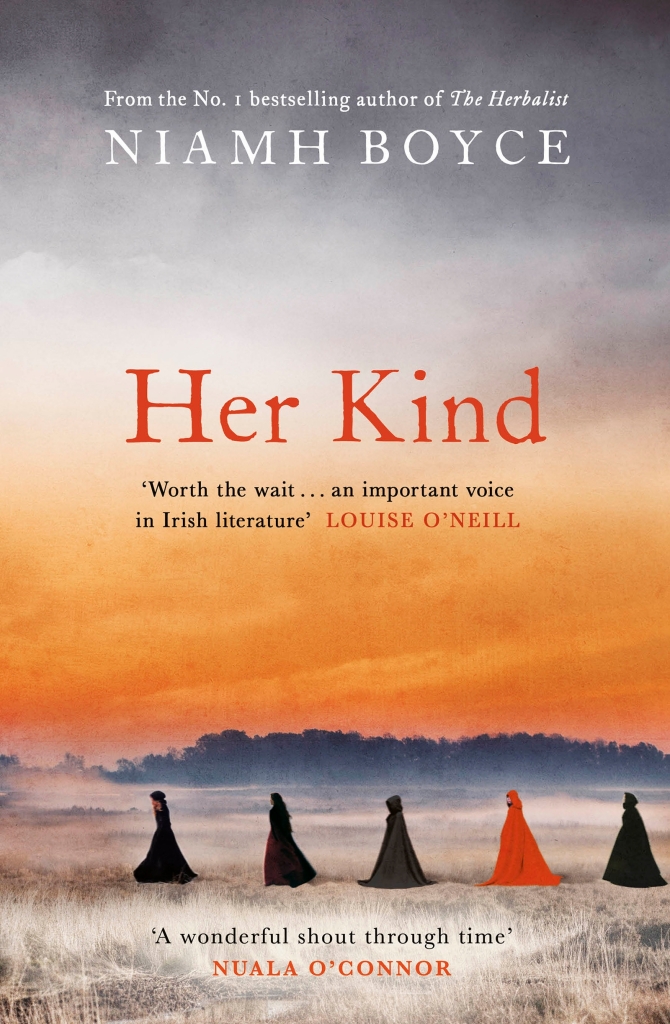
The theme of witches and witchcraft is a topic which you explore in detail in your novel, Her Kind, described as a “vivid re-imagining of the events leading up to the Kilkenny Witch trial” that took place in Ireland in 1324. What attracted you to retell the story of Alice Kytler, Petronelle and Basila?
The Kytler witch trial was initially mentioned to me by Patricia Deevy from Penguin Ireland when she asked if I would consider writing a novel about Alice Kyteler. This was back in 2013, when Penguin published my first novel The Herbalist. I wasn’t attracted to the idea at first as I was in the middle of another story and the Kytler trial felt a little too familiar to be interesting, the way local things often seem unexotic. However, after a while, I was curious and started to research a little. I soon discovered that I didn’t know the full story at all…Soon after, Petronella came into a poem I was writing. I still wasn’t committed to exploring the story in the form of a novel, but she was beginning to intrigue me more and more. What spurred me on, to be completely honest, was a video aimed at tourists in Kilkenny Cathedral. It was a screen placed beside Ledrede’s effigy. (Ledrede was the Bishop responsible for the witch trial.) An actor played the role of Ledrede, and told us the story of the evil witches, and that ‘pestiferous Petronella de Media.’ All these years later and his version was still the official one? That was enough. I opened the word document that night, titled it ‘Petronella.’ It became the novel Her Kind.
Her Kind is a speculative historic account of women’s lives, whose stories has been manipulated as a result of attempts to erase them from mainstream historical narrative. How burdened did you feel when attempting to tell their story from subjective viewpoint?
Very. There are so many ways to tell a story, and when you’re about to begin, you make decisions that shapes the kind of story it will be. The Kilkenny Witchcraft trial had all the ingredients of a sensational piece of work – the bizarre accusations, the witch trial, the powerful figure of Alice Kyteler, and the bishop’s mania. Imaginatively potent, I looked forward to dramatizing those aspects with relish. But as I researched further, and discovered more about the case, in particular, Petronella De Media’s fate – I felt a responsibility to do her justice, and not to sensationalise her story. Hers was the voice I felt most obligation towards. The women in the case are defined by the accusations made against them still, by the words of Bishop Ledrede. Petronella’s ‘confession’, came from his pen, and was written in his voice. I decided early on, that I would have to write her story without glossing it over, or making it aesthetically pleasing – as is often done with women’s pain in fiction and film. I decided I couldn’t write the book unless I could write from her point of view, in a way that felt authentic. I began by writing the most difficult scenes first. I wrote many drafts and versions of those scenes. One day as I was writing, I read over the scene I had just finished, and I felt her say, ‘stop making it beautiful, it wasn’t beautiful.’ I rewrote, culling all flourishes. When her thread was written, I knew I could write the rest of the book.
Jack Zipes describes the term witch as being “mimetically loaded.” Once used as a label to shame and oppress, it has since been re-appropriated by feminists as a term of empowerment. What does the term mean to you?
A lot of contemporary women are self-identifying as witches, reclaiming the term, and it means so many different things to different people doesn’t it? For some it’s primarily a way of accessing their own power and intuition, or becoming more connected to nature, or their own sensuality. It’s quite a fluid thing, not that easy to risk defining. Some work alone, and some in covens, formal and informal. The connection I have with my female friends feels coven like, more so as the years pass. I find the idea very exciting and empowering, especially in relation to creativity and feminism. More and more, I’m interested in magical thinking, in working with intuition over so called ‘logic’ – in dreamwork etc – I did a workshop recently with Alice Tarbuck on poetry and spells. Her book A Spell in the Wild is wonderful. We Were Witches by Ariel Gore, a book about being a single mother in the nineties is honest, powerful, and magical.
In Her Kind, silence manifests itself in various ways. Low social status enforces voicelessness upon the servants, Petronelle is forbidden to speak of her former Irish identity and Basila engages in a selective silencing of her choosing. Can you talk a little about how this theme of silence specifically relates to the women in the story and the process of telling their stories?
At an early stage, I knew what the last line of the novel proper would be, and that it would be Basilia who said it. (I don’t plot or plan the novels, but often know what the final image, or sentence is going to be, then I figure out how to get there.) When I had that sentence, instinct said it would be the first time Basilia spoke aloud. There would be a great weight then, to what she said. When you have no power, you have the power to withhold. So, muteness is a weapon Basilia uses – against her mother initially. It’s a way of punishing her. She keeps herself to herself, won’t speak, won’t share her dreams. As time passes, she becomes used to that silence, finds comfort in being peripheral for many of the people in Alice Kytler’s house, though not Alice. When I was writing these two characters, I was very aware that Irish was their first language. In the opening pages of the novel, they enter a town where Irish is not spoken. (The English colony of Hightown) Basilia’s muteness is related to this fact. They are Irish women living inside a walled town in their own country, a place where their own language and kind are outlawed. It is not somewhere Basilia can speak freely in her own tongue any way. And of course, the novel is written in English – as Irish is not my first language. I, myself, felt a certain muteness in relation to this 14th Gaelic girl and so the theme of silence is linked not only to their identity but to my own. When Petronelle surrenders their real names and language in exchange for the safety of the colonisers … she mistakes them for things that can be easily retrieved.
What you are working on at the moment? Are there any topics which you are particularly keen to explore next?
I’ve been working on a novel called The Women for the past two years. It’s set in the 1850s, between Edinburgh and Ireland. It’s about writing, mediums, asylums, memory and the Irish famine. It weaves fact and fiction, as is inspired by the goings on in the life of Catherine Crowe, author and spiritualist, who wrote the game-changing book Nightside of Nature. It’s becoming much more fictional and fantastical than my previous novels, a little more fun – perhaps a response to the past year of lockdown.
